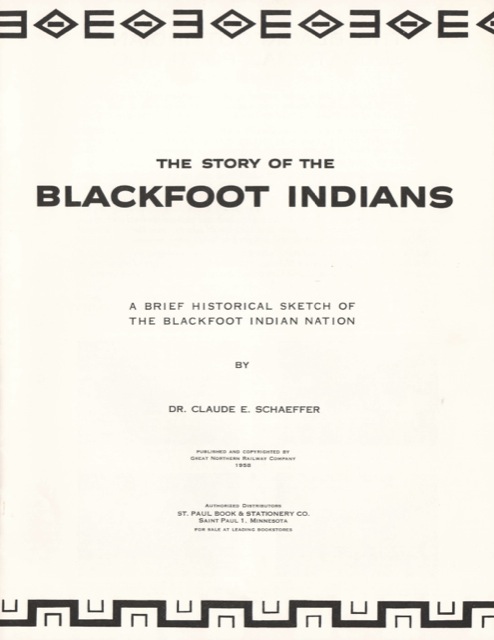For the 1958 portfolio of 24 Winold Reiss portraits, the Great Northern replaced Frank Linderman’s article about the Blackfeet Indians with one by Claude Schaeffer, who (unlike Linderman) was an actual anthropologist. Schaeffer apparently alerted the railway to the fact that the Indians preferred the name “Blackfoot” over “Blackfeet,” as the former term is used throughout his paper and on the 1958 portfolio envelope. The word “blackfoot” is a translation of the Indian word “siksika,” the name of one of the three Blackfoot tribes, and refers to the moccasins the Indians wore.

Click image to download a 6.6-MB PDF of this 12-page article.
Schaeffer lived with the Blackfoot Indians for seven years while employed as the director of the Museum of the Plains Indians at Browning, Montana, a town not far from Glacier Park that was served by the Great Northern Railway. In 1954 he moved to Portland where he became curator of the Oregon Historical Society and wrote several papers on Northwest Indians as well as a map showing 114 Northwest Indian tribes and languages.
